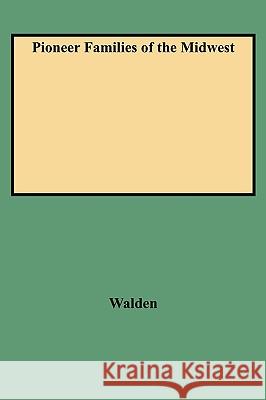Pioneer Families of the Midwest » książka
Pioneer Families of the Midwest
ISBN-13: 9780806347912 / Angielski / Miękka / 2009 / 186 str.
In 1763, East Florida was ceded to Britain by the Treaty of Paris which concluded the French and Indian Wars, only to be returned to Spain twenty years later as part of the settlement of the American War of Independence. This intriguing volume is based upon an examination of a census of the "English residents at the time of change of Flag," that was conducted by the newly installed Spanish government between August and October 1784. Mr. Feldman has culled every reference to non-slave, non-Spanish heads of households found in the Spanish census. In all there are 740 entries, each giving the name of the household head, nation or colony of origin, occupation, and number of persons per household. In many instances, the annotations also refer to the householder's city of origin, if married, number of children and/or slaves, location of residence in St. Augustine, intentions with respect to Spanish citizenship, or more. Wherever possible, Mr. Feldman has embellished the entries with information about the householders beyond 1784 based on his own research. Supporting the text itself are a number of important appendices, including: a list of the English militia on August 6, 1784; an alphabetical list of the residents of St. Augustine by street; and a listing of free or runaway African Americans giving their current circumstances. Rounding out this volume of interest to researchers with ancestors who may have migrated to or from East Florida at this time is a complete name index to all persons found in the census.
In 1763, East Florida was ceded to Britain by the Treaty of Paris which concluded the French and Indian Wars, only to be returned to Spain twenty years later as part of the settlement of the American War of Independence. This intriguing volume is based upon an examination of a census of the "English residents at the time of change of Flag," that was conducted by the newly installed Spanish government between August and October 1784. Mr. Feldman has culled every reference to non-slave, non-Spanish heads of households found in the Spanish census. In all there are 740 entries, each giving the name of the household head, nation or colony of origin, occupation, and number of persons per household. In many instances, the annotations also refer to the householders city of origin, if married, number of children and/or slaves, location of residence in St. Augustine, intentions with respect to Spanish citizenship, or more. Wherever possible, Mr. Feldman has embellished the entries with information about the householders beyond 1784 based on his own research. Supporting the text itself are a number of important appendices, including: a list of the English militia on August 6, 1784; an alphabetical list of the residents of St. Augustine by street; and a listing of free or runaway African Americans giving their current circumstances. Rounding out this volume of interest to researchers with ancestors who may have migrated to or from East Florida at this time is a complete name index to all persons found in the census.











